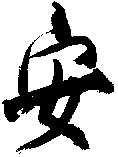
Peace
| |||||||||||||||||||||
Introductory Articles
Here, Dr. Jahnke has provided an introductory series of articles providing a general overview of Qigong and Tai Chi. The beginning Taiji and Qigong student will appreciate the clarity of these articles and find them useful in exploring the various practices.
| Article | Excerpt © Roger Jahnke O.M.D |
|
Qigong is one of the four pillars of traditional Chinese medicine: Acupuncture, Massage, Herbal Medicines and Qigong. Of these, Qigong is the one that can be most easily self initiated. Both massage and herbal remedies can also be done as self-care, however, Qigong is the mother of Chinese self healing. Patients who use Qigong faithfully need less medication, less acupuncture and heal faster. |
|
|
In Chinese tradition there are thousands of methods and practices for self healing generally called Qigong (Ch'i Kung). Taiji is one catagory of Qigong forms. Taiji consists generally of 108 separate movements that are connected together into a specific order. There are several kinds ofTaiji including: Yang Style, Chen Style, Wu Style and others. Most of these forms of Taiji have created a short form, between 20 and 40 movements, that allows for beginners to learn more quickly, elders to have an abbreviated practice and patients who are ill to practice without too much to learn. |
|
|
There are thousands of kinds of Qigong. Taiji is one of the most widely recognized. There are six paths that an individual might follow through the practice of Taiji and other methods of Qigong: The Self Reliance and Empowerment Path, The Path to Self Healing, The Healers Path, The Path of Supreme Strength and Conflict Resolution, The Super Natural Path, and The Path of Transcendence and Immortality. |
|
|
You may be asking: How then shall I decide which type of practice to pursue? Would the practice be different if my goal is healing rather than performance enhancement? Is the simple path as useful as the esoteric path? Can I learn from video tapes, audio tapes or books ? Is it necessary to have a teacher? Is it better to practice with a group? I've heard of Qigong Masters, shall I seek a master? How much is it necessary to practice? |
|
|
In the practice of all forms of Qigong, including the various styles of Taiji, there are a few guidelines that will give the most rapid growth and learning while helping you to stay in the comfort zone. |
|
|
Oriental philosophies and the ancient personal transformation traditions of the pre-colonial, original cultures have always held that the world we experience through our senses is but a fragment of what "is". In addition, an individual's energy field is proposed to be more central to who they are than their physical body. As western science digs itself out from under it's "seeing is believing" position what occurs is a profound validation of ideas and traditions that were called "mysterious", "savage", "unscientific", and "primitive" as little as a decade ago. As we now use science to explain the "why" and the "how" of the mysterious, unusual arts and disciplines are revealed as practical and meaningful. |
|
|
If you have wondered whether Qigong and Ch'i Kung and Chi Gung are all the same thing, you are not alone. If you have wondered about the difference between T'ai Chi, Taiji and Taijiquan your questions are shared by millions. Why do some writers translate the Chinese character for energy or vitality as Qi and others as Ch'i? |
|
|
Self-healing practices from Dr. Jahnke's book, The Healer Within. |

